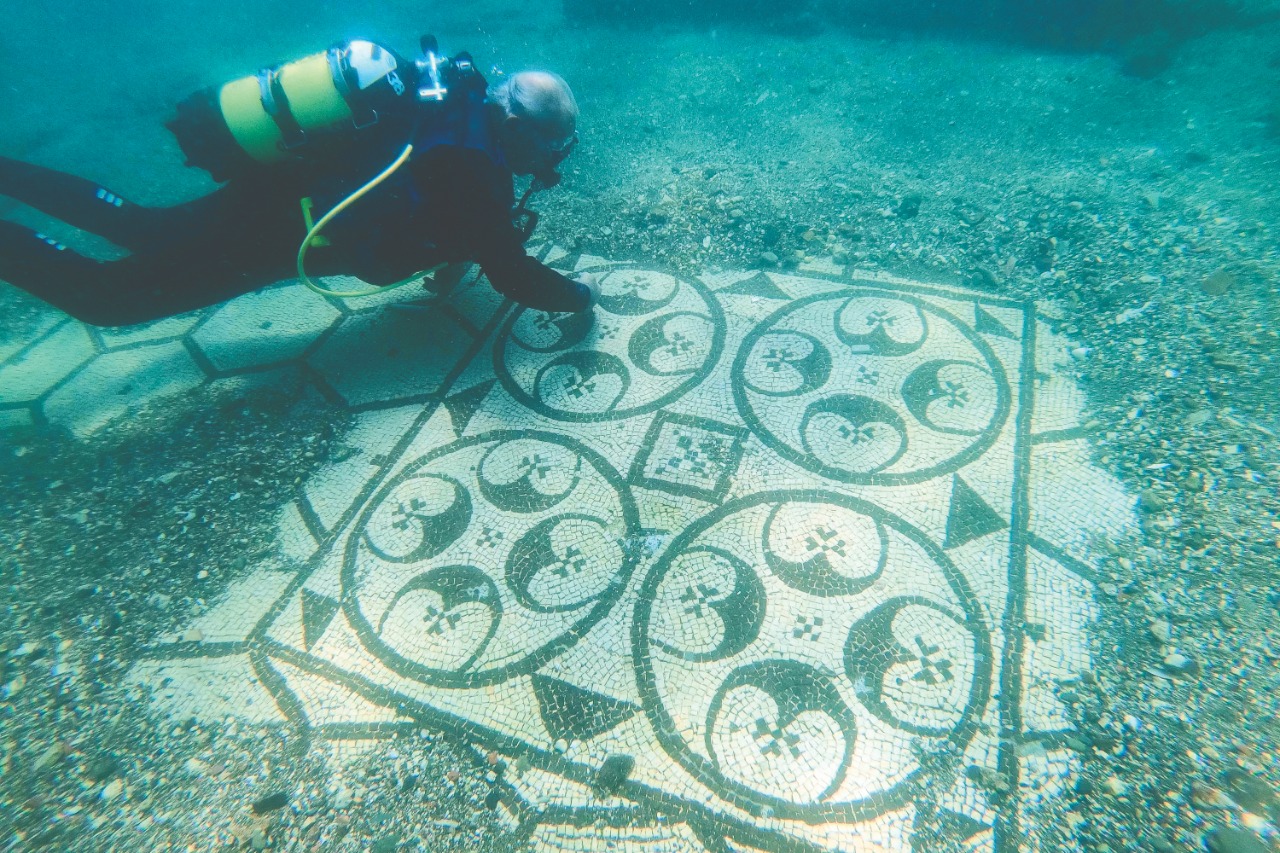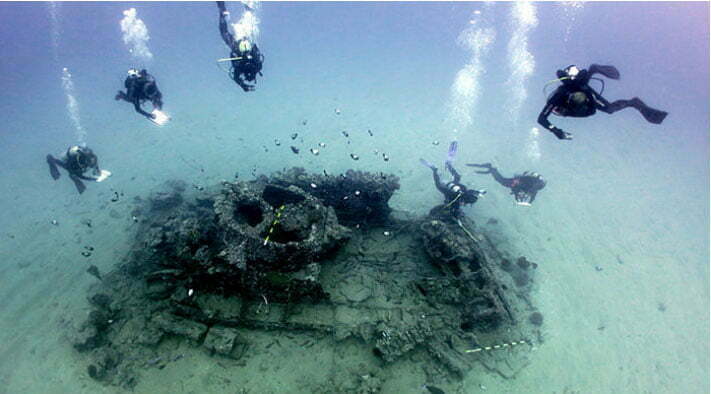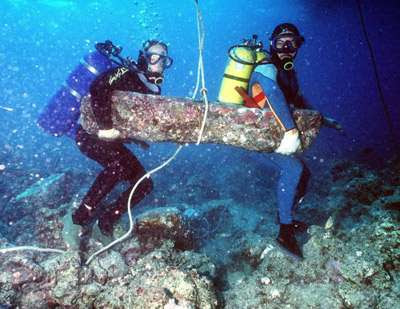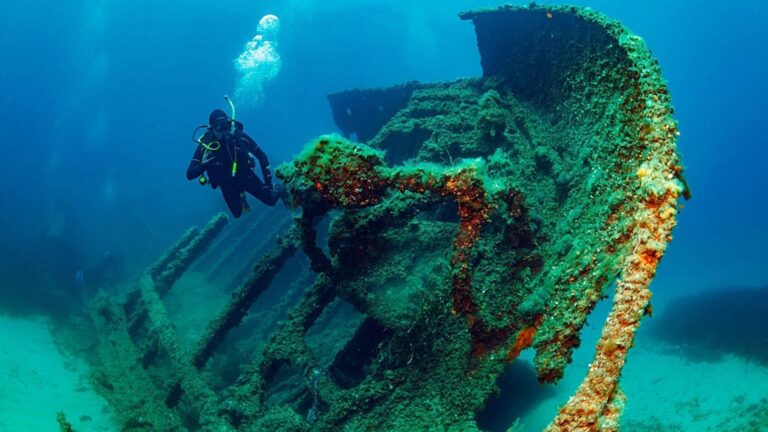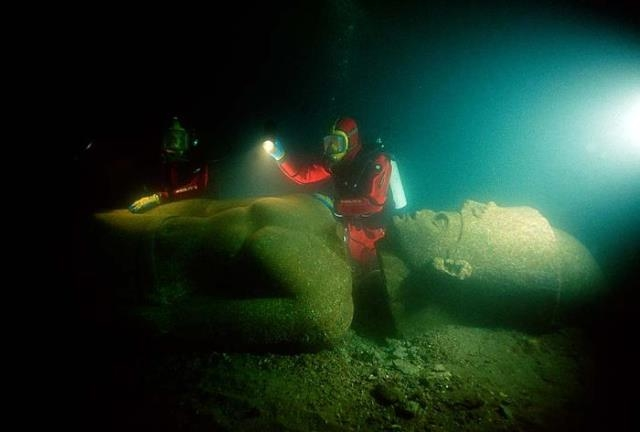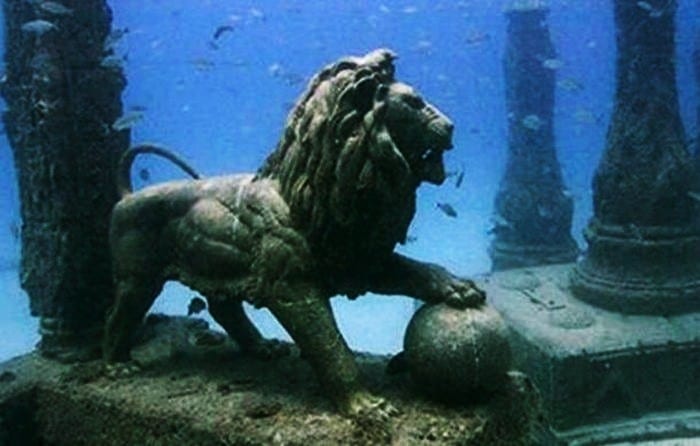Underwater Discoveries: Exploring the Treasures of the Deep Sea
The vastness and mystery of the deep sea have always captivated mankind. The unexplored depths of the ocean hold hidden treasures and wonders waiting to be discovered. Thanks to recent technological advancements, we can now venture into the abyss and shed light on the mysteries that lie beneath. This article serves as a guide, taking you on a fascinating journey through the underwater discoveries that have unveiled the secrets of the deep sea.
Table of Contents
The Depths of the Ocean
The deep sea, with its vastness and mystery, has always captivated the human imagination. It is a realm of darkness and silence, an unexplored frontier filled with secrets waiting to be unraveled. Understanding the depths of the ocean and its unique ecosystem is crucial for scientific research and conservation efforts.
The deep sea is a complex and diverse ecosystem, comprising various zones with distinct characteristics. From the sunlit surface layer known as the epipelagic zone to the pitch-black depths of the hadal zone, each zone is home to a myriad of organisms adapted to survive in its specific conditions. Exploring the deep sea not only allows us to discover new species and unravel their adaptations, but also provides valuable insights into the interconnectedness of marine ecosystems.
Studying the deep sea is not only important for scientific curiosity, but also for practical reasons. Many of the resources needed for human survival, such as fisheries and potential sources of pharmaceuticals, can be found in the depths of the ocean. By understanding the unique characteristics of these ecosystems, we can develop conservation strategies to ensure their sustainability and mitigate the impact of human activities. The deep sea is a treasure trove of knowledge and potential solutions to global challenges.
Advancements in technology have been instrumental in exploring the depths of the ocean. Remotely operated vehicles (ROVs) and manned submersibles allow scientists to venture into the deep sea without physically entering its hostile environment. Sonar and satellite imagery enable researchers to map the seafloor and detect underwater features. These technologies not only facilitate the discovery of new species and habitats, but also provide valuable data for geological and environmental studies. Thanks to technological advancements, we are able to uncover the hidden wonders of the deep sea and gain a better understanding of our planet.
In conclusion, the deep sea is a fascinating and valuable area of exploration. Its importance for scientific research, conservation, and resource sustainability cannot be overstated. By understanding the depths of the ocean and its unique ecosystem, we can unlock the mysteries of our planet, discover new species, and find innovative solutions to global challenges. The deep sea is a realm of wonder and knowledge waiting to be explored, and it is our responsibility to preserve and protect it for future generations.
Technological Advancements in Underwater Exploration
The exploration of the deep sea has been greatly facilitated by modern technologies that have revolutionized the way we understand this mysterious realm. These advancements have allowed scientists and researchers to discover hidden wonders and uncover the secrets of the deep sea.
One of the most significant technological advancements in deep-sea exploration is the use of remotely operated vehicles (ROVs) and manned submersibles. These vehicles are specifically designed to withstand the extreme pressures and conditions of the deep sea, allowing scientists to descend into the depths and explore areas that were previously inaccessible. ROVs are equipped with cameras and robotic arms, enabling them to collect samples, take images, and capture video footage of the deep-sea environment. Manned submersibles, on the other hand, allow human explorers to personally witness the breathtaking beauty and complexity of the deep sea.
In addition to ROVs and manned submersibles, sonar and satellite imagery have also played crucial roles in deep-sea research. Sonar is used to map the seafloor and detect underwater objects, providing valuable information about the topography and geology of the deep sea. Satellite imagery, on the other hand, enables researchers to monitor changes in the ocean surface, such as temperature and currents, which can have a significant impact on the deep-sea ecosystem. Together, these technologies have provided scientists with a deeper understanding of the deep sea and its intricate complexities.
The role of technology in deep-sea exploration cannot be overstated. These advancements have allowed us to delve deeper into the mysteries of the deep sea, uncovering hidden treasures and expanding our knowledge of this mesmerizing world. As technology continues to evolve, we can only expect more groundbreaking discoveries to be made, further fueling our fascination with the deep sea and its vast wonders.
Natural Wonders Found in the Deep Sea
The deep sea is home to a myriad of fascinating and enigmatic creatures. These organisms have adapted to survive in the harsh and extreme conditions of the deep sea, showcasing unique features and adaptations that are truly awe-inspiring.
Deep-sea life comprises various types of organisms, each with its own distinct characteristics. From bioluminescent creatures that illuminate the darkness to those with bizarre shapes and sizes, the deep sea is a treasure trove of biodiversity.
One of the most intriguing examples of deep-sea organisms is the anglerfish. These remarkable creatures possess a bioluminescent lure that dangles in front of their mouths, attracting prey in the darkness of the deep sea. Another mesmerizing creature is the vampire squid, with its inky defensive mechanism and ability to transform its body shape. Additionally, the giant isopods are a sight to behold, with their armored exoskeleton and large size.
However, it’s not just the physical appearances of these creatures that make them so captivating. The adaptations they have developed to survive in extreme pressures, cold temperatures, and near-total darkness are truly extraordinary. Some species have highly efficient oxygen-binding proteins that allow them to survive with very low oxygen levels, while others have specialized sensory systems to navigate their dark environment.
Exploring and studying these natural wonders found in the deep sea is crucial in order to better understand the intricacies of our planet’s biodiversity. Each new discovery provides valuable insights into the evolutionary processes and adaptive strategies employed by these unique organisms.
With ongoing advancements in technology and increased focus on deep-sea research, the discoveries in this field continue to amaze and inspire scientists and the general public alike. The deep sea truly holds a multitude of hidden treasures, waiting to be unraveled by curious minds and innovative technologies. So let us dive deeper into the secrets of the deep sea and marvel at the natural wonders that await us in its mysterious depths.
Deep-Sea Discoveries
The deep sea has long been a source of fascination for scientists and explorers alike. Throughout history, numerous famous deep-sea discoveries have shed light on the mysteries of the underwater world. These discoveries have not only provided valuable insights into our planet’s history, but they have also sparked the imagination and curiosity of people around the globe.
One of the most captivating aspects of deep-sea exploration is the uncovering of famous shipwrecks at the bottom of the ocean. These sunken vessels provide a glimpse into the past, offering a window into the history and stories of those who sailed the seas centuries ago. From the Titanic to the USS Monitor, these discoveries have allowed us to piece together events and gain a deeper understanding of our maritime heritage.
But shipwrecks are not the only treasures found in the deep sea. Lost cities, once thought to be only myth and legend, have also been discovered beneath the ocean’s surface. Cities like Atlantis, believed to be nothing more than a fictional tale, have taken on a new level of intrigue as evidence of ancient civilizations submerged in the depths emerges. These findings challenge our understanding of human history and raise questions about the extent of our ancestors’ accomplishments.
In addition to lost cities and shipwrecks, deep-sea exploration has also led to the discovery of other natural wonders. Underwater volcanic activity and methane seeps have been found in the depths, revealing dynamic geological processes that shape our planet. These discoveries not only contribute to our understanding of Earth’s formation, but they also have implications for fields such as geology and climate change research.
As technology continues to advance and our ability to explore the deep sea improves, there is no doubt that even more remarkable discoveries lie ahead. These findings will not only expand our knowledge of the underwater world but also inspire new questions and spark further exploration. The deep sea truly holds a wealth of secrets waiting to be unveiled, and it is through the exploration of famous shipwrecks, lost cities, and the examination of underwater volcanic activity and methane seeps that we begin to unlock the mysteries of the deep.
In conclusion, the deep sea is a realm of endless wonder and discovery. Through the exploration of famous shipwrecks, lost cities, underwater volcanic activity, and methane seeps, we gain a deeper understanding of our planet’s history and the intricate processes that shape it. As we continue to delve into the depths, our knowledge and appreciation of the hidden treasures of the deep sea expand, reminding us of the importance of continued exploration, conservation efforts, and the preservation of this unique and awe-inspiring ecosystem.
The Search for Extraterrestrial Life
The connection between deep-sea exploration and the search for extraterrestrial life is a subject that has sparked curiosity and excitement among scientists and researchers alike. As we delve into the depths of the ocean, we begin to unravel the complexities of life thriving in extreme conditions. This exploration not only enhances our understanding of our own planet but also provides valuable insights into the possibilities of life beyond Earth.
The extreme conditions found in the deep sea, such as high-pressure environments, lack of light, and low temperatures, are similar to the conditions that exist in some extraterrestrial environments. Scientists speculate that if life can exist in the deep sea, it is not impossible for it to exist in other extreme environments, such as on other planets or moons within our solar system.
Astrobiology, the study of life in the universe, plays a crucial role in our understanding of deep-sea exploration. The field examines the origins, evolution, and potential habitation of life beyond Earth. By studying the unique conditions and organisms found in the deep sea, scientists can gather valuable data and insights that could aid in the search for extraterrestrial life.
The possibility of finding life in the deep sea opens up thrilling possibilities for the search for life elsewhere in the universe. Discovering organisms in such extreme environments not only expands our understanding of life’s adaptability but also raises questions about the potential for habitable environments beyond our own planet.
In conclusion, the search for extraterrestrial life is intimately connected to deep-sea exploration. By diving into the mysteries of the deep sea and studying its extreme conditions, scientists gain valuable insights into the possibilities of life beyond Earth. Astrobiology provides the framework for understanding the connections between deep-sea exploration and the search for extraterrestrial life. As we continue to explore the deep sea and expand our knowledge of its hidden wonders, we are one step closer to unlocking the secrets of the universe.
Conservation of the Deep Sea
The deep sea is not only a realm of discovery and wonder but also vulnerable to the impact of human activities. Shedding light on the impact of human activities is crucial to understanding the need for conservation efforts.
Human activities such as deep-sea mining, fishing, and pollution have the potential to disrupt the delicate balance of the deep-sea ecosystem. Shedding light on the impact of these activities is essential in order to develop sustainable practices that can minimize harm and protect the treasures of the deep sea.
Raising awareness about the importance of conservation and sustainable practices is key to ensuring the long-term survival and health of the deep-sea ecosystem. By raising awareness about the fragility of this unique environment, we can encourage individuals and communities to take action and make a difference.
There are many organizations and initiatives dedicated to preserving the deep sea. These include marine conservation organizations, scientific research institutions, and government agencies working together to protect and manage deep-sea habitats. By supporting these organizations and initiatives, we can contribute to the preservation of the deep-sea ecosystem and ensure that future generations can continue to explore and discover its hidden treasures.
In conclusion, conservation of the deep sea is of utmost importance. Through shedding light on the impact of human activities, raising awareness, and supporting organizations and initiatives dedicated to preservation, we can protect the wonders and treasures of the deep-sea ecosystem for generations to come. Let us come together to preserve the mysteries and beauty that lie beneath the surface of the ocean.
Conclusion
The journey deep below the ocean’s surface has revealed a world of wonders and mysteries that continue to captivate our imagination. Through advanced technologies and scientific exploration, we have made remarkable discoveries that shed light on the hidden treasures of the deep sea.
Reflecting on these remarkable discoveries, it becomes apparent how crucial it is to prioritize continued exploration and conservation efforts. The deep sea holds secrets that are vital for scientific research and understanding our planet’s intricate ecosystem. Preserving and protecting this unique environment is of utmost importance for the future of our planet.
As we delve deeper into the depths of the ocean, we are filled with a sense of wonder and awe. The beautiful and often bizarre adaptations of deep-sea organisms, such as the mesmerizing bioluminescence of the anglerfish and the striking appearance of the vampire squid, remind us of the diversity and resilience of life on Earth.
Moreover, the connection between deep-sea exploration and the search for extraterrestrial life is an intriguing prospect. The extreme conditions found in the deep sea serve as potential analogs for the environments that may exist on other planets or moons. The study of astrobiology, which intersects with deep-sea exploration, opens up exciting possibilities for finding life beyond Earth.
However, this exploration comes with responsibility. Human activities have had a significant impact on the deep-sea ecosystem, including pollution, overfishing, and climate change. It is critical that we raise awareness about the importance of conservation practices and work towards sustainable solutions.
In conclusion, the deep sea is a realm of awe-inspiring beauty and intrigue. The remarkable discoveries made through underwater exploration highlight the vast potential for knowledge and understanding that lies beneath the surface. By reflecting on these discoveries, emphasizing the need for continued exploration and conservation efforts, we can ensure that the hidden treasures of the deep sea are protected for future generations to marvel at.

